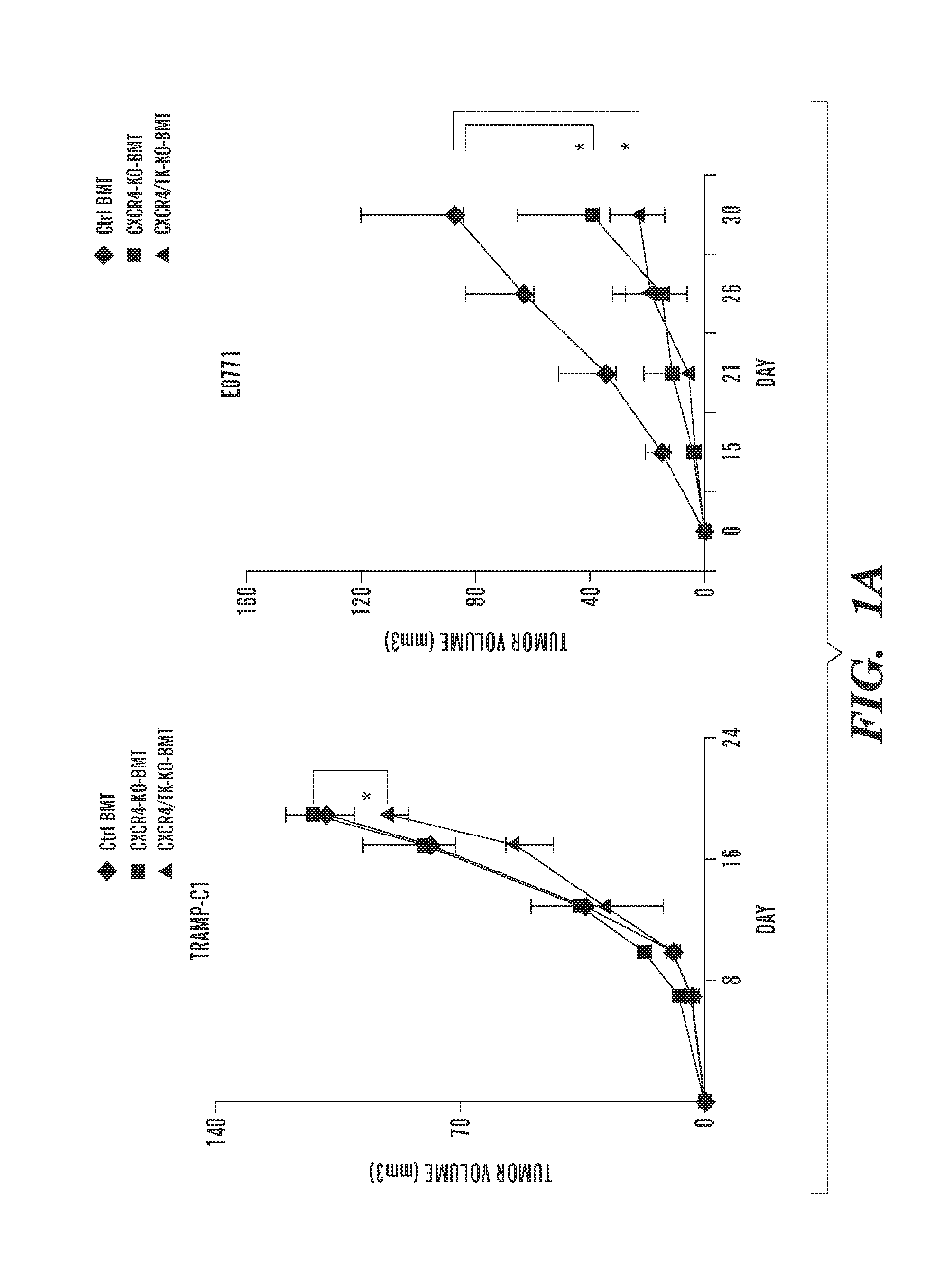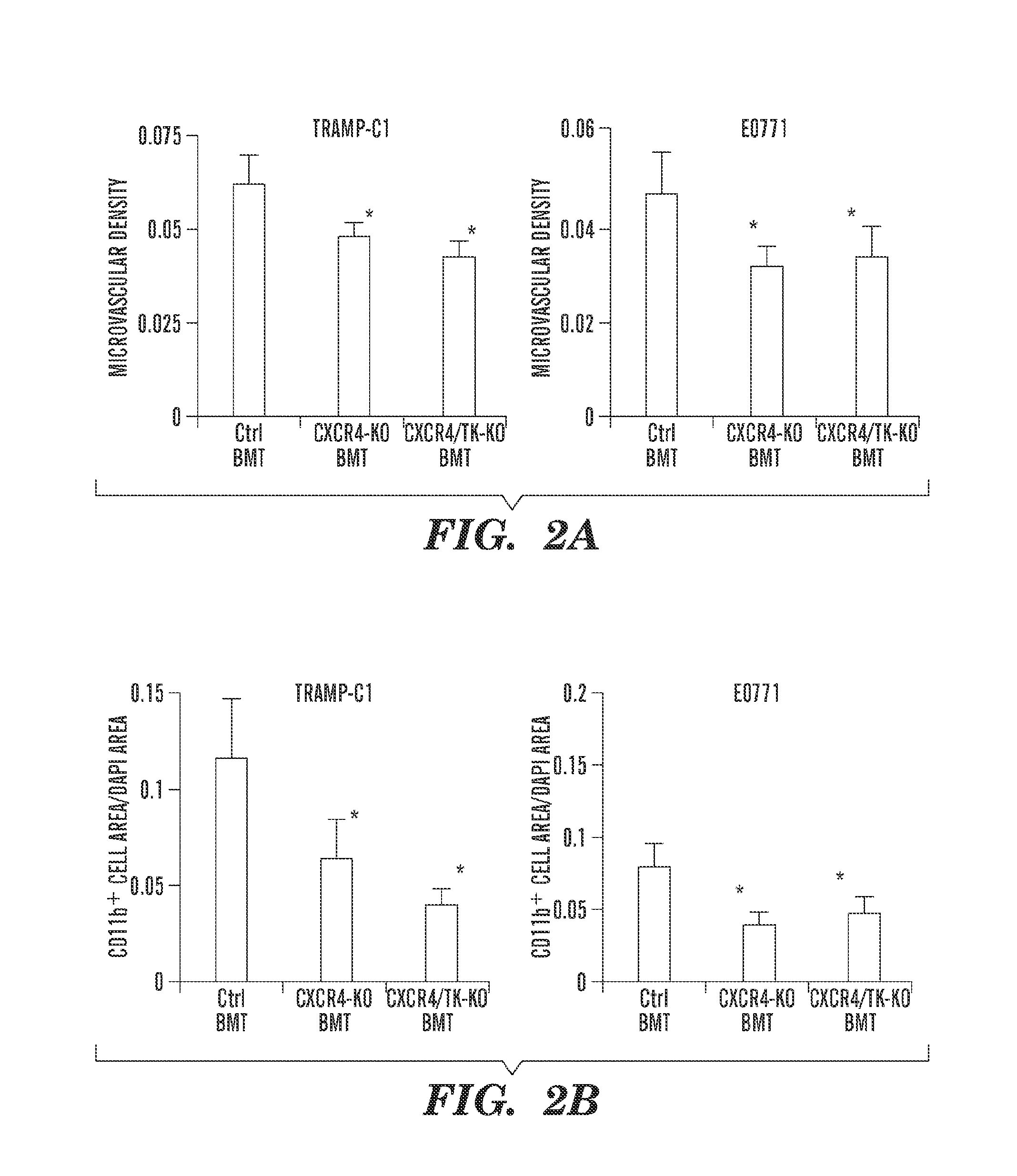Anti-cxcr4 as a sensitizer to cancer therapeutics
- Summary
- Abstract
- Description
- Claims
- Application Information
AI Technical Summary
Benefits of technology
Problems solved by technology
Method used
Image
Examples
example 1
REFERENCES FOR EXAMPLE 1
[0231]1. Coffelt S B, Lewis C E, Naldini L., Brown J M, Ferrara N, De Palma M. Elusive identities and overlapping phenotypes of proangiogenic myeloid cells in tumors. Am J Pathol 2010; 116:1564-76.[0232]2. Rafii S, Lyden D, Benezra R, Hattori K, Heissig B. Vascular and haematopoietic stem cells: novel targets for anti-angiogenesis therapy? Nat Rev Cancer 2002; 2:826-35.[0233]3. Duda D G, Cohen K S, Kozin S V, et al. Evidence for incorporation of bone marrow-derived endothelial cells into perfused blood vessels in tumors. Blood 2006; 107:2774-6.[0234]4. De Palma M, Venneri M A, Galli R, et al. Tie2 identifies a hematopoietic lineage of proangiogenic monocytes required for tumor vessel formation and a mesenchymal population of pericyte progenitors. Cancer Cell 2005; 8:211-26.[0235]5. Loges S, Schmidt T, Carmeliet P. “Antimyeloangiogenic” therapy for cancer by inhibiting PIGF. Clin Cancer Res 2009; 15:3648-53.[0236]6. R, Lu K V, Petritsch C, et al. HIF1α induces...
example 2
C—X—C Receptor Type 4 Promotes Metastasis by Activating p38 Mitogen-Activated Protein Kinase in Myeloid Differentiation Antigen (Gr-1)-Positive Cells
[0252]Materials and Methods
[0253]Reagents.
[0254]Human recombinant (r)VEGF (National Cancer Institute), mouse rCXCL12 and rPlGF (R&D Systems), AMD3100 (Sigma), Alzet osmotic pumps (DURECT), p38 MAPK and phospho-p38 MAPK antibodies (Cell Signaling), and a p38 inhibitor (Invitrogen) (SI Materials and Methods) were used. TRAMP-C1 prostate cancer cells were purchased from ATCC. The E0771 breast cancer cell line was originally established by F. M. Sirotnak and kindly provided by E. Mihich (Roswell Park Memorial Institute) (34). Both cell lines are derived from tumors from C57BL / 6 mice.
[0255]Animals.
[0256]All animal procedures were performed following the guidelines of the Public Health Service Policy on Humane Care of Laboratory Animals and approved by the Institutional Animal Care and Use Committee of the Massachusetts General Hospital. VEGF...
PUM
| Property | Measurement | Unit |
|---|---|---|
| Time | aaaaa | aaaaa |
Abstract
Description
Claims
Application Information
 Login to View More
Login to View More - R&D
- Intellectual Property
- Life Sciences
- Materials
- Tech Scout
- Unparalleled Data Quality
- Higher Quality Content
- 60% Fewer Hallucinations
Browse by: Latest US Patents, China's latest patents, Technical Efficacy Thesaurus, Application Domain, Technology Topic, Popular Technical Reports.
© 2025 PatSnap. All rights reserved.Legal|Privacy policy|Modern Slavery Act Transparency Statement|Sitemap|About US| Contact US: help@patsnap.com



